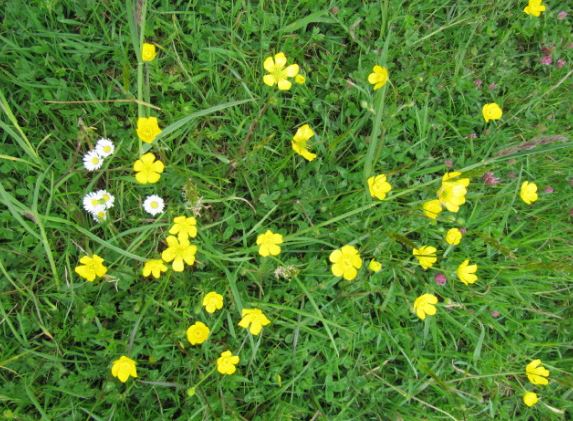Lawn Weeds That Are Common and How to Get Rid of Them
 The first step in dealing with pesky weeds is to identify them. This handy chart helps you do just that. This list includes troublesome weeds that compete with lawn and garden plants, plus noxious weeds that are legally prohibited or controlled at the state level. Click on a picture for details and how to get rid of each weed.
The first step in dealing with pesky weeds is to identify them. This handy chart helps you do just that. This list includes troublesome weeds that compete with lawn and garden plants, plus noxious weeds that are legally prohibited or controlled at the state level. Click on a picture for details and how to get rid of each weed.
Creeping Charlie
Creeping Charlie (Glechoma hederacea) is a persistent perennial that takes over lawns and garden beds by stealing nutrients and smothering desirable plants. It is also known as ground ivy, gill-over-the-ground, and alehoffs. If your garden is overrun with this weed, spray the area with a post-emergence herbicide. Choose a day with little wind so the chemicals do not blow onto nearby plants. If your yard contains ornamental plants or vegetable gardens, use a cover to block the sun so the herbicide only targets the creeping charlie and not your desired plants. Wear protective gloves. Trim the leaves and stems of charlie with a pair of gardening shears, placing each trimming in a bag to be disposed of later. An effective way to keep your lawn weed-free is by hiring lawn care services Arlington VA, that can maintain your lawn in top condition through regular mowing and other lawn maintenance.
Dandelion
Dandelion is a perennial weed that spreads rapidly. It is most common in areas of the lawn that are thin or bare. Its bright green leaves are oval-shaped and end at a slight point. It prefers full sun and fertile soils but is also tolerant of light shade and drier conditions once established. It is a good forage plant for livestock and can be an important part of an organic system. Its rosette of leaves and yellow flowers make it easy to identify. Its seeds contain a parachute-like structure called a pappus that aids wind dispersal. It is a common ingredient in herbal medicinal preparations.
Creeping Thyme
This low-growing filler or groundcover produces fragrant flowers in summer and fills spaces between stepping stones, patio pavers and other garden features. It also does well in crowded lawn areas where grass is struggling. Its fern-like leaves grow close to the ground and release their heady fragrance when you walk through it. It can be confused with the similar-looking Sedum requieni or miniature stonecrop, but you can tell it apart by smelling the leaves; stonecrop is not aromatic. Thymus serpyllum blooms with drifts of snow-white to pink flowers. It’s easy to grow, but you must protect it from excessive sun and heat. Consider putting up shade cloth or using a misting system during the hotter months of the year.
Common Chickweed
Like its relative Mouse-Ear Chickweed, this annual can be a pain in your lawn or garden. It grows quickly to form dense mats of small white flowers, and its leaves are oblong with a point at the end.
It has a shallow root system and can easily be pulled by hand. Regular mowing and using coarse mulch discourages weed growth. Both Common and Mouse-Ear Chickweed can also be controlled using pre-emergent herbicides such as isoxaben (Gallery), pendimethalin (Pendulum) or oxadiazon (Ronstar). It works best when the weeds are young. Be sure to follow label directions and reapply as directed.
Procumbent Pearlwort
Pearlwort or Sagina procumbens, a diminutive green weed, looks like Irish Moss and forms tight mats in closely mown turf. It grows best on wet soil and often indicates irrigated or over-stressed lawns. It reproduces asexually from whitish, creeping rootstocks and sexually from wind-blown seed. It can be difficult to control in a yard because it is moderately resistant to selective weed killers.
It spreads efficiently through its branched roots and by seed. It resists mowing and foot traffic and colonizes cracks between pavers. It also produces a decent amount of seeds from a full flowering summer.
Bristly Ox-Tongue
Bristly ox-tongue (Helminthotheca echioides) is a stiff annual or biennial herb found in rough grassy places, such as roadsides and other wasted spaces. It is an Asteraceae family member with spiny leaves and flowers. It is a troublesome weed in crop fields, orchards, gardens, and other landscaped areas. It prefers a mix of dryness and moisture and grows well in soil with moderate to high nutrient availability. This plant is similar to dandelion in its appearance, but it has more pointy leaves and grows close to the ground. It also has thick, hairy leaves and blisterlike swellings on its stems.